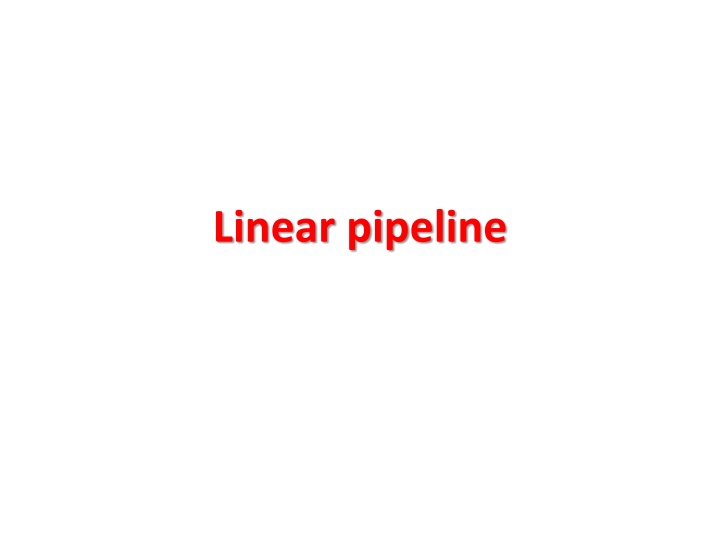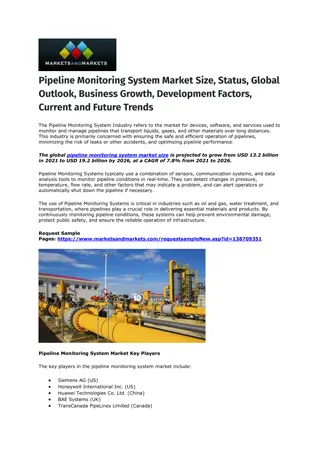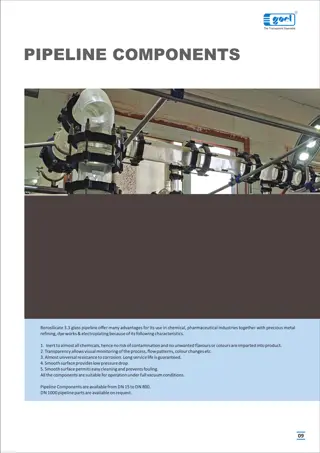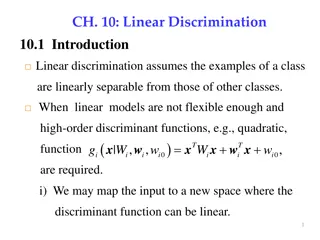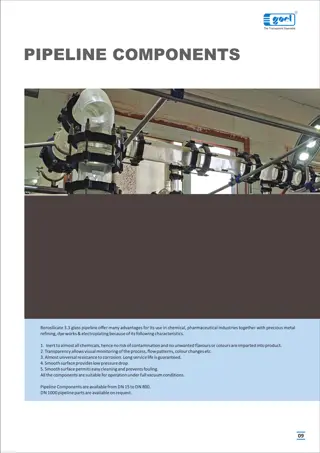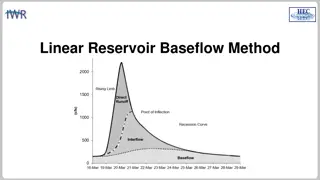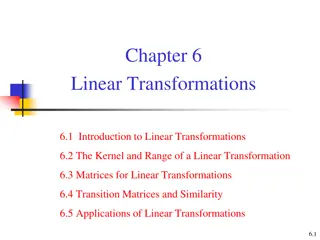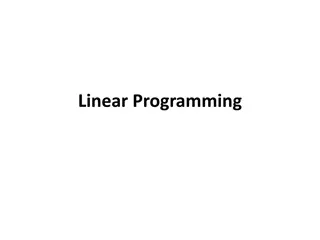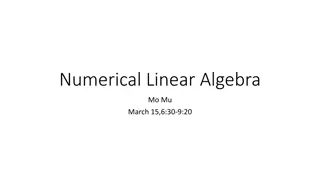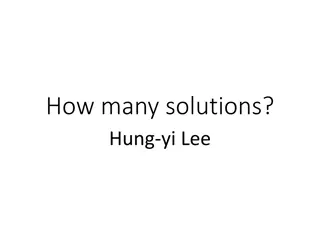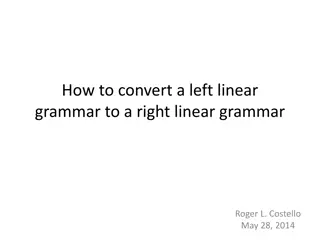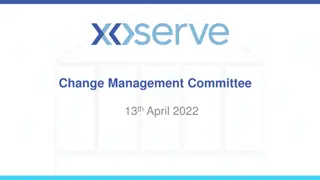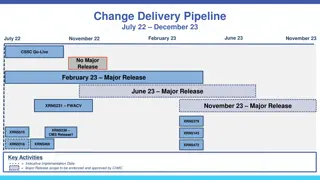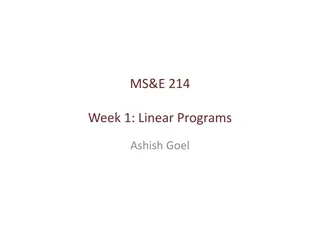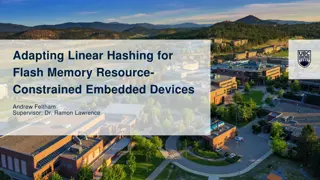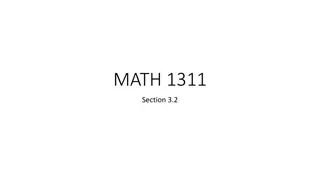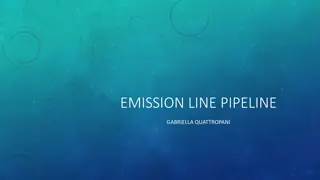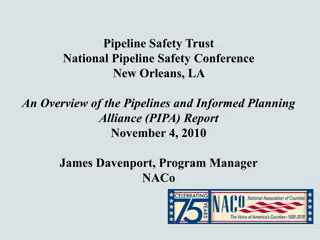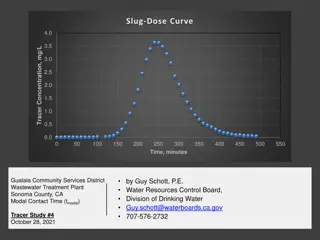Linear pipeline
In the realm of computing, linear pipeline processors play a crucial role in speeding up data processing tasks. The pipeline consists of stages through which data flows, each stage handling a specific processing task sequentially. This description delves into the architecture and utilization patterns of synchronous and asynchronous pipeline models, along with the concept of reservation tables to control data flow. Explore the intricacies of how information traverses through these cascades of processing stages to enhance overall system efficiency and performance.
Download Presentation

Please find below an Image/Link to download the presentation.
The content on the website is provided AS IS for your information and personal use only. It may not be sold, licensed, or shared on other websites without obtaining consent from the author.If you encounter any issues during the download, it is possible that the publisher has removed the file from their server.
You are allowed to download the files provided on this website for personal or commercial use, subject to the condition that they are used lawfully. All files are the property of their respective owners.
The content on the website is provided AS IS for your information and personal use only. It may not be sold, licensed, or shared on other websites without obtaining consent from the author.
E N D
Presentation Transcript
A linear pipeline processor is constructed with K stages (processing stages). Inputs are fed to the pipeline at the first stage S1 The processed results are passed from stage Si to stage Si+1for all i=1,2,3, .K-1. The final result is obtained at last stage Sk
The pipeline consists of cascade of processing stages. The stages are combinational circuits performing arithmetic or logic operations over the data stream flowing through the pipe. The stages are separated by a high-speed interface latches. The latches are fast registers for holding the intermediate results between the stages. Information flows between adjacent stages are under the control of a common clock applied to all the latches simultaneously.
The utilization pattern of successive stages in a synchronous pipeline is specified by a reservation table.
A reservation table represents the flow of data through the pipeline for one complete evaluation of a given function. A marked entry in the (i,j)th square of the table indicates that stage Si will be used j time units after the initiation of the function evaluation. For a unifunctional pipeline, one can simply use an x mark the table entries. For a multifunctional pipeline, different marks are used for different functions, such as the A s and B s in the two reservation table for the sample pipeline.
NON LINEAR PIPELINE PROCESSOR: Dynamic Multifunction Allows feed back and feed forward connections , in addition to the streamline connections. More than one output; the output of the pipeline is not necessarily from the last stage.
Non linear Pipeline Processors In some computations, the outputs of the pipeline are fed back as future inputs i.e input may depend on previous outputs. Thus pipeline with feedback may have a nonlinear flow of data. Proper sequencing with nonlinear , data flow may enhance the pipeline efficiency.
Consider a Sample Pipeline that has a structure with feed forward and feedback connections as shown in fig. This pipeline is dual functional, denoted as function A and B. We will number the pipeline stages S1,S2,...Sz from input end to output end. A feed forward connection connects a stage Si to Stage Sj such that j>=i+2 and a feedback connection connects a stage Si to Stage Sj such that j<=i. Thus a pure linear pipeline is pipeline without any feedback or feed forward connections.
Difference Between Linear and Non- Linear pipeline: Linear Pipeline Non-Linear Pipeline Linear pipeline are static pipeline because they are used to perform fixed functions Non-Linear pipeline are dynamic pipeline because they can be reconfigured to perform variable functions at different times. Linear pipeline allows only streamline connections. Non-Linear pipeline allows feed- forward and feedback connections in addition to the streamline connection. It is relatively easy to partition a given function into a sequence of linearly ordered sub functions. Function partitioning is relatively difficult because the pipeline stages are interconnected with loops in addition to streamline connections.
Linear Pipeline Non-Linear Pipeline The Output of the pipeline is produced from the last stage. The Output of the pipeline is not necessarily produced from the last stage. The reservation table is trivial in the sense that data flows in linear streamline. The reservation table is non- trivial in the sense that there is no linear streamline for data flows. A single Reservation table is needed for the evaluation of different functions. Multiple Reservation tables can be generated for the evaluation of different functions.
